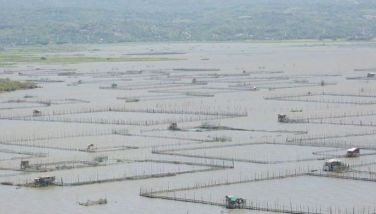Angat Dam water level continues to drop
MALOLOS CITY, Philippines – The National Power Corp. (Napocor) is turning to prayer power for rain as the water level at the Angat Dam continues to drop.
Water elevation at the dam dropped to 182.79 meters above sea level, nearing the critical level of 180 meters as of 6 a.m. yesterday.
“We are trying to locate those from UP who prayed for rains here in 2010,†said Rodolfo German, general manager of the Angat River hydroelectric power plant, referring to members of a group based at the University of the Philippines.
He said the group conducted prayers and chanted for rains when water elevation dropped to its lowest level.
German said they could not do anything at this point but pray.
He said they might also ask members of a local Dumagat tribe residing near the watershed to conduct a ritual rain dance.
“We could not do anything. It does not rain so we have to rely on prayers,†he said.
He said a religious group based in this city also visited Angat Dam last March and prayed for rain.
Records show that water elevation at the dam drops at a rate of .30 meters a day.
German asked Metro Manila residents to conserve water to prevent a possible shortage. Angat Dam provides 97 percent of Metro Manila’s potable water requirement.
The planned cloud seeding operations over the Angat watershed has yet to be implemented. The Provincial Disaster Risk Reduction and Management Office said Napocor had not advised them when it would be implemented.
Napocor president Gladys Cruz-Sta. Rita earlier said they intend to conduct cloud seeding operations in the first week of May.
Contingency plan
Meanwhile, Malacañang said there are contingency measures to address the El Niño and El Niña phenomena that may hit the country this year.
Presidential Communications Operations Office Secretary Herminio Coloma Jr. said over dzRB that one of the pillars of the Philippine Development Plan is climate change adaptation and mitigation.
He said the Aquino administration acknowledges that climate change is a global reality and nations must prepare for it.
The Department of Science and Technology (DOST) has warned of an impending El Niño, which might trigger drought and stronger storms. The phenomenon may also cause water shortage, which can cause serious damage to crops.
The Philippine Atmospheric Geophysical and Astronomical Services Administration said the onset of El Niño might begin in June and could peak in the last quarter of 2014.
Coloma said the government has mapped out plans to address all scenarios, especially after the overlapping disasters that hit the country last year.
He cited powerful typhoons, massive flooding and storm surges during Super Typhoon Yolanda.
Coloma said the government is doing everything to mitigate its effects, especially in the agriculture sector.
Water conservation
Sen. Loren Legarda urged households and local government units (LGUs) to undertake water conservation initiatives in preparation for the dry spell and a drastic cut in the country’s water supply.
“As the DOST has warned of an impending El Niño, we expect that government agencies have already set out programs to address the effects of this phenomenon. Foremost of our concerns is food security because prolonged drought would drastically cut down the production of local crops like rice, corn, sugar cane, vegetables and other agricultural products. It can also cause a decrease in fisheries yield,†she said.
Legarda said LGUs must take the lead in conservation efforts, including the establishment of rainwater harvesting facilities in their respective areas.
She said Republic Act 7616 enacted in 1989 mandates the creation of rainwater catchment basins.
Based on the law, Legarda said construction of water wells, rainwater collectors, development of springs and rehabilitation of existing water wells must be done in all barangays.
“We are already experiencing hot temperatures, but rain showers occur every now and then. Manila was flooded yesterday due to heavy rains. A rainwater catchment system could have avoided or decreased the volume of flood,†she said.
She said catchment systems can be built using low-cost local materials, but people can use drums to store rainwater in the meantime.
Legarda said water preservation and recycling programs bring multiple benefits of water conservation, flood prevention and food production. – With Aurea Calica, Marvin Sy
- Latest
- Trending




























